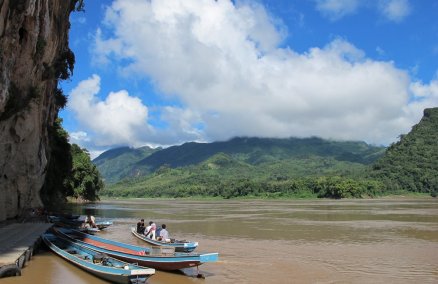Two main reasons people hesitate to travel are expensive air tickets and expensive hotel rooms. With an increasing numbers of low cost airlines, there are now plenty of affordable air travel options. But what about hotel rooms? Surely you don’t want your limited budget putting you in a creepy guesthouse down a seedy alley. So travel pioneers have found a way to stay for less and meet new friends in the process, and it’s only just catching on in Thailand. Welcome to hospitality exchange.
Hop between couches
Couch Surfing is the world’s largest hospitality exchange community, where travelers are able to connect with local residents in their destination cities. If it works out, you might get a free or very cheap stay at their home in a spare room or on the couch. In return, you are expected to extend the same hospitality when a traveler comes to your town and needs accommodation. This trend has become a global phenomenon, though it’s especially popular in Europe (they’re all poor there now) and just starting to get tradition here in Asia.
“Couch surfing is created on a basis of give and take. It is based on an idea to make a better world where everyone can be friends,” says Toom Klanutai, a graphic designer who is also an unofficial leader of Couch Surfers in Thailand, many of whom meet every Wednesday at The Chilling House Café at Coco Walk (BTS Ratchathewi). Toom has been couch surfing since 2009 and has hosted more than 440 surfers. He also travels a lot; he just got back from an 85-day trip in Europe where he didn’t stay at a single hotel. “And that’s another benefit: when you travel, there are friends and free rooms everywhere in the world,” he says.
Couch Surfing is also a way to bridge cultural differences, offering a local’s perspective on new places. We met Ellyza Hamdan, a visitor to Bangkok from Kuala Lumpur, Malaysia, who says couch surfing has given her a new appreciation for different cultures. “Couch Surfing lets you go around the world and helps the world come to you. It makes me realize how great my country is. When I host people who want to learn, I try my best to introduce them to Malaysia’s many cultures. I’m a Muslim, but I don’t think religion is a limitation.”
Ming, a 30-year-old salesperson agrees. “I can actually travel by listening to their stories. I also improve my English as well as learn to speak some French from these couch surfing friends.”
Start Surfing?
The way it works is easy: create your account on couchsurfing.org, list your property with a description and pictures, and state your availability if you’re ready to host. Then go through your future friends’ properties in your preferred destinations, make a request and wait (and pray) for a confirmation. You can also join groups to meet people with the same interests. (There are groups for twins, cancer survivors or even gay nudists, if you wish.)
But there are some limitations, such as finding a room in very hot destinations. “It was very difficult to get hosted in Paris,” Toom says. Besides, there is the relative lack of privacy if you’re staying with someone, not to mention a very limited number of days you can stay. All this to say nothing about potential unplanned personality conflicts between host and surfer that may arise.
Furthermore not every friend turns out to be a good friend; new members must be careful. “Some members misunderstand the core idea of Couch Surfing,” warns Toom. “I used to experience travelers who expected to pay nothing—not even for their own food. Some also join Couch Surfing for international hook-up opportunities.” But Toom adds that he’s only had a few bad experiences over the years.
For those concerned about potential security issues, especially women, reading a surfer’s profile is a must. “This is essential as you are accepting somebody to sleep and share your space. I’ve done it every time so I haven’t had any unexpected situations,” says Meow, who has hosted around 100 surfers since 2008.
Read more >> Sofa, So Good!: Websites to Swap Free Stays
Read more >> REAL BEDS: Pay Up and Get Some Privacy
Advertisement


















